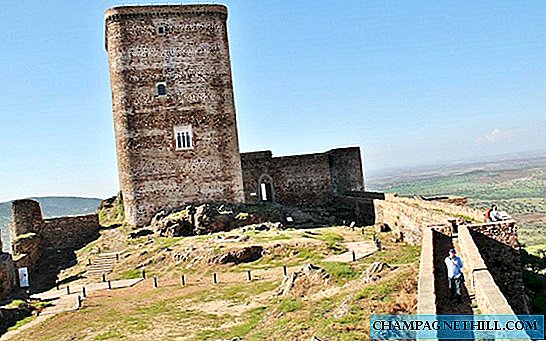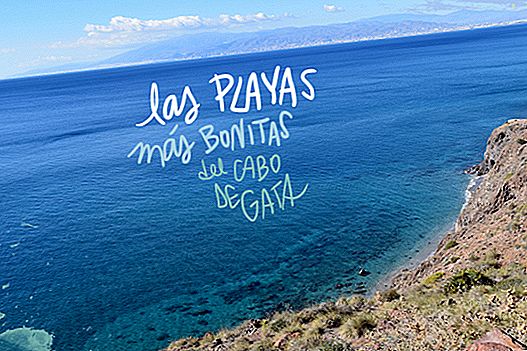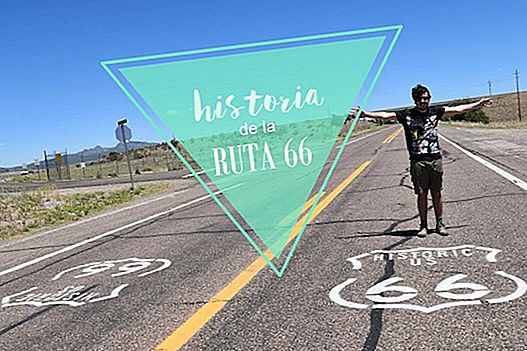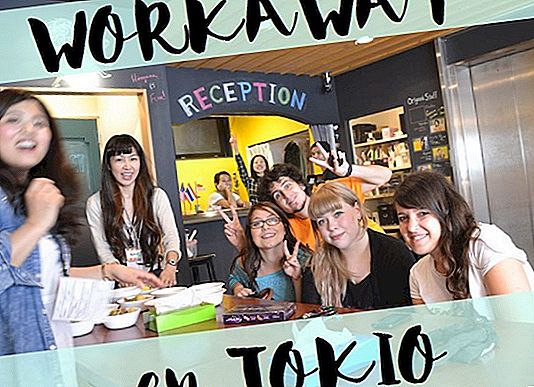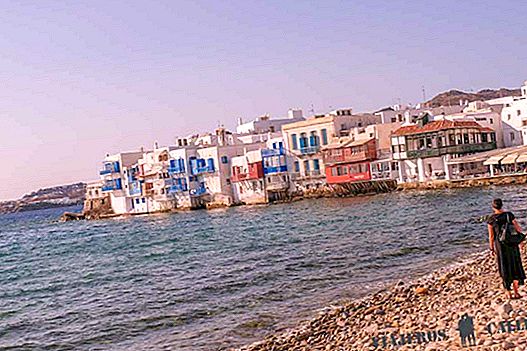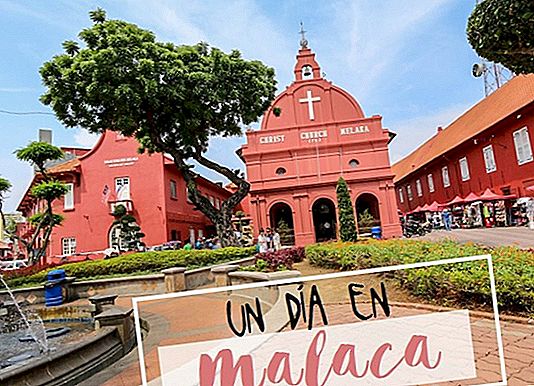
Looking for ideas of things what to see and do in Melaka in one day? We'll tell you then…
Although we are hopelessly in love with Kuala Lumpur (whoever reads to us with certain frequency probably already knows), to be fair we must say that the Malaysia's most interesting city, at least considering its history, it is Malacca (or Melaka). The passage of different cultures through its territory over the years left a remarkable heritage and artistic heritage, it can be seen on the facades of its buildings, in the mixture of religions that makes mosques, Hindu temples on the same street, Christian churches and Chinese temples, in their gastronomy and in their stories. All this meant that in 2008 this city was named as Heritage of humanity by unesco,although my mother would miss him ... - "Really?" - The best thing is that you come without many expectations and be surprised.
But before we go to work we will try to summarize a little why this enclave is (or rather was) so important and what towns passed and left their mark ...
A little bit of history
Malacca has been the epicenter of trade between India and Asia for 600 years, before this honor was taken away from Singapore or Kuala Lumpur itself. Its privileged location, dominating the Strait of Malacca, allowed it to control the maritime traffic between the Indian Ocean and the Pacific Ocean (almost nothing!). This did not take long to reach the ears of Europeans, and more specifically of the Portuguese, which at that time were one of the greatest powers beyond the seas. After failed negotiations with the Sultan of Malacca the Portuguese troops invaded the city, it was the year 1511.
From now on it was a gray era: there were attempts to regain control of the port by other sultanates, the trade agreements that the Sultan maintained with China were broken and at this time other ports in Malaysia grew, planting a fierce commercial competition with that of Melaca But Portugal maintained control ... until other Europeans arrived.
The Dutch East Indies CompanyWith these eagerness to control international trade, he began to stand up to the Portuguese, who resisted at first. But in 1641 they yielded to the Dutch attacks and their local allies. The tulip domain began in these lands ...
Until 1824 when it was ceded to the British East India Company, becoming one of the many colonies of the British Crown. Their power lasted until World War II, when the Japanese expelled them based on bombings.
And, as almost always happens, the places that currently have a special charm for being historical enclaves, with a mixture of cultures and peoples, in their past they suffered battles for their control and the bloodshed of thousands and thousands of persons.
Walking tour of Malacca / Melaka: what to see and do in one day
The historic center of Malacca is relatively small and can be easily explored on foot, in fact it is the recommended way to do it. In this section we are going to propose a walking tour through the historic center of Malacca, so you don't miss any of the most interesting attractions in the city. Here it goes everything to see and do in Malacca:
You can start the tour inHarmony Streetalthough his real name isJalan TokongIt is one of the most characteristic streets of Malacca and it represents in a very symbolic way the character of this city: among its traditional low houses are temples of the three main religions:
- The Chinese temples Xiang Lin Si and Cheng Hoon Teng. The latter was built in 1685 (the oldest in Malacca) with materials imported from China. Its carvings of mythological creatures make it one of the most impressive buildings in Chinatown. Free pass.
- The Masjid Kampung Kling Mosque. It combines decorative elements from different parts of the world, such as Sumatran, India, Malaysia or China.
- And the Hindu temple Sri Poyatha Vinayagar Moorthi.
Photo from www.shutterstock.com
Then we turn to Riverand continue along the walk on one of its sides. The atmosphere is very pleasant, with riverside houses made guesthouses and cafes with very beautiful decorations.
We cross the river by the bridge and in front of it we will see at the other end the church of St Francis Xavier, the most important Christian church in Malacca. Built on the ruins of a Portuguese church, it dates from 1859, and its two impressive bell towers stand out on the main facade. He dedicated himself to the Jesuit missionary Francisco Javier, born in Navarra and who extended Catholicism in Southeast Asia.
We sneak down the side alley and if we continue for a few minutes we will reach the Dutch cemetery. A little further down is the Palace Museum of the Sultan of Malacca, when we went it was closed, so we saved the 2 RM from the entrance. It is a replica of the Sultan's palace with exhibits related to the culture of Malacca. Open from 9:00 a.m. to 6:00 p.m., except Tuesday and Friday from 12:15 a.m. to 2:45 p.m.
There is a very interesting road that goes up to the St Paul's Hill, it is on one side of the cemetery and allows you to save yourself a good detour. On this hill rises the imposingSt Paul's Church, built in 1521 and that housed for a few years the remains of the Jesuit missionary San Francisco Javier, before being transferred to Goa. Admission is free and from the top you have beautiful panoramic views of the city.
Following another path, this time much more visible, it goes down to To famous (or also called Santiago Gate), possibly the symbol of the city of Malacca. These are the remains of the Portuguese fortress that made Malacca an impregnable place for many years with the arrival of the Portuguese. What we see today is the main gate of this fort, built in 1511 and heavily damaged by the invasion of the Dutch in 1641.
Returning to the center we will meet again with the river, if you follow its direction towards the sea we can reach the Maritime Museum (or "Flor de la Mar" 3RM), with a curious location: neither more nor less than in a replica of a Portuguese caravel of the fifteenth century. It shows the history of Malacca from the sultanate, to the different foreign invasions. On the way you pass by another museum, the Islamic Museum(15 RM), in case you are interested in spreading this religion in Malaysia with historical documents and other types of samples.
Then we go to the epicenter of Malacca, the Dutch square (or Dutch Square), where some of the most important buildings in the city are located, all covered by a characteristic salmon color, such asThe Stadthuys, one of the oldest buildings of the Dutch era (1660) and that developed the functions of town hall; and others like the clock tower, the church of Christ-from 1740 and built with bricks brought from Holland-, or the Queen Victoria Fountain.
In this area the majority of rickshaws, each one characterized with a Disney character or movie, or worse yet ... full of plastic flowers and little hearts! Of course, all well equipped with music equipment and powerful subwoofers.
We end the day in Jonker Walk, the most famous street in the city. From 6:00 p.m. on Fridays, Saturdays and Sundays (although the atmosphere is seen from a little before) a night market, with countless places of all kinds, karaoke and musical performances and an area with several places to eat some of the Malaysian specialties, such as hokkien mee, fried oyster omelet and finish with some typical sweet like cendol, cream pie (de Portuguese roots) and another one that is made with a soft and sticky paste and that are covered with peanut in pieces (we do not know the name but it is very rich!). There are also several very interesting cafes and restaurants on this street and in the parallel and much quieterJalan Tun Tan Cheng Lock.
Some photos of Malacca
Do you know more stuffWhat to see and do in Melaka in one day?
Transportation, how to get to Malacca from Kuala Lumpur? From the TBS station in Kuala Lumpur there are many buses to Malacca. You can see schedules and prices and make the reservation on the easybook website. It takes about two hours.
accommodation, Where to sleep in Malacca? We did it at the Hotel Arissa for € 20 a night. The hotel is very new and comfortable, although it is somewhat far from the center (about 15 minutes walking). Perhaps it is best to look for something in the immediate vicinity of Jonker Walk, although in this area they are usually more expensive and somewhat older.


